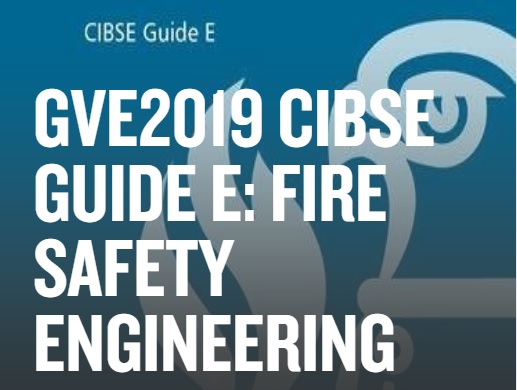CIBSE updates Fire Safety Engineering guidance

|
| The Chartered Institute of Building Services Engineers (CIBSE) has published a revised and updated fourth edition of Guide E: Fire Safety Engineering. |
The revised Guide takes account of recent changes in Regulation 7 of the Building Regulations in England, which prohibits the use of combustible materials in the external walls of buildings over 18m in height containing residential accommodation. It also incorporates additional content on international best practice, including North America, Australasia and the Gulf Region.
Publication of the document follows the second anniversary of the tragic fire at Grenfell Tower. The new guide was close to publication prior to the fire, and the steering committee subsequently made further updates and enhancements to reflect regulatory changes since the fire. The Guide also includes additional guidance on building facades and external wall construction.
Further changes to the UK's fire codes of practice, guidance documents and means of enforcement are expected. Until these changes are introduced designers must continue to create safe buildings that meet occupants' needs. The revised guide will enable designs to be developed that reflect current best practice and the latest standards. Further changes to the rules will be incorporated into later revisions of the document, with significant updates being posted online as soon as they are available.
There are generally two ways of demonstrating compliance with building codes and regulations. One is to follow the prescriptive guidance given in the codes and accompanying guidance, and the other is to use a fire engineering approach. Guide E is focused on fire engineering and is intended to be the go-to document that provides building services engineers and fire life-safety consultants with guidance on a broad range of fire engineering issues. It will be particularly useful for those involved in innovative or unusual building designs where the prescriptive approach may not be suitable.
CIBSE Guide E covers both fire protection engineering and fire-safety engineering, Fire protection engineering is where the designer is responsible for the design of automatic fire suppression systems and fire detection systems; fire safety engineering is where the engineer is responsible for the design of fire strategies including the location and number of stairs and smoke control regimes.
The guide was first published in 1997; the fourth edition addresses the full range of fire safety issues, from evacuating the building and giving access to firefighters, to controlling the spread of smoke and fire.
For further information, or to purchase a copy of the guide go to www.cibse.org/knowledge
[edit] About this article
This article was previously published in July 2019 on the website of the Chartered Institute of Architectural Technologists (CIAT) and can be accessed here.
[edit] Related articles on Designing Buildings Wiki
- ACM cladding.
- Approved Document B.
- BS 8414 Fire performance of external cladding systems.
- BSRIA.
- Building services engineer
- Building services.
- Chartered Institute of Architectural Technologists (CIAT)
- Chartered Institution of Building Services Engineers CIBSE
- Cladding for buildings.
- Concept services design.
- Consultation on banning the use of combustible materials in the external walls of high-rise residential buildings.
- Evacuating vulnerable and dependent people from buildings in an emergency FB 52.
- Fire performance of external thermal insulation for walls of multistorey buildings, third edition (BR 135).
- Fire risk in high-rise and super high-rise buildings DG 533.
- Fire safety engineer.
- Fire suppression.
- Grenfell Tower articles.
- Independent review of the building regulations and fire safety.
- Performance gap.
--CIAT
Quick links
[edit] Legislation and standards
Fire Safety (England) Regulations 2022
Regulatory Reform (Fire Safety) Order 2005
Secondary legislation linked to the Building Safety Act
Building safety in Northern Ireland
[edit] Dutyholders and competencies
BSI Built Environment Competence Standards
Competence standards (PAS 8671, 8672, 8673)
Industry Competence Steering Group
[edit] Regulators
National Regulator of Construction Products
[edit] Fire safety
Independent Grenfell Tower Inquiry
[edit] Other pages
Building Safety Wiki is brought to you courtesy of:





